SIR JOHN LAVERY RA RSA RHA (IRISH/BRITISH 1856 - 1941), SKETCH, THE HOSPITABLE GATE oil on panel, signed, titled and dated '86 26.5cm x 40.5cm Framed. Provenance: Sotheby's, London, 22 July 1987. lot 150. Sotheby's, London, 6 May 2010, lot 4. Note: John Lavery was welcomed as a celebrity by collectors in Paisley after his return from France at the end of 1884. They were impressed by avant-garde ambitions expressed in large canvases such as On the Loing, An Afternoon Chat, (Ulster Museum, Belfast), shown at the Glasgow Institute of Fine Arts in February 1885. Although he established a studio in Glasgow, these wealthy middle-class local worthies were keen to retain his services. The wool and cotton manufacturer, James Fulton, for instance, offered Lavery a cottage/studio, close to his baronial mansion on his estate at The Glen, Paisley, while the artist produced portraits of members of his family. William MacKean, a soap manufacturer and the town’s Provost also provided portrait commissions and some of these are likely to have been shown at the artist’s first solo exhibition at the George A. Clark Town Hall at the end of November 1886. This grand edifice was funded four years earlier by the Clark family, owners of Anchor Mills, one of Paisley’s principal employers, who were also Lavery patrons. No catalogue for Lavery’s first show is known to be in existence, but he advertised it as ‘Portraits, Pictures & Sketches painted in the Neighbourhood’. We may however assume that in addition to views of The Glen, and smaller pictures painted in the garden of the MacBrides’ house at nearby Cathcart, where Lavery had worked on his most famous canvas, The Tennis Party, (Aberdeen Art Gallery), the exhibition also contained sketches like that of the ‘Hospitable Gate’. An earlier street scene, Lady on a Safety Tricycle 1885, (Government Art Collection), is however thought to be an entrance to Cartbank. This tentative watercolour lacks the bold handling, vivid realization and atmospheric qualities of Sketch of The Hospitable Gate. The swift notation and autumnal palette of this suburban street scene indicates that it was painted shortly before Lavery’s exhibition opened. Although there is little detail of the house, it is possible that it represents Chapel House in Ardgowan Street, Paisley - then on the fringe of the Blackhall Estate and the river White Cart Water. In the 1880s this four-square Georgian house on a leafy lane, was owned by James Clark one of the brothers who inherited Anchor Mills. The building’s square façade, its placing in relation to the street, and the shallow pitch to its roof, suggests that the ‘hospitable gate’ could lead to just such a house. Whilst every effort is made to provide accurate and honest condition reports, none of our staff is a professional conservator, restorer or engineer. Any condition report offered should be accepted as an indication of any obvious issues or problems or the lack of them. Buyers are urged to satisfy themselves in respect of the condition of any lot and McTear’s can provide contact details of local professional restorers who will provide fully comprehensive expert reports – usually for a modest charge. The condition report does not form part of any contract between McTear's and the buyer, and all lots are offered "as is" in accordance with our Terms of Business in the printed catalogue and available on our website.
SIR JOHN LAVERY RA RSA RHA (IRISH/BRITISH 1856 - 1941), SKETCH, THE HOSPITABLE GATE oil on panel, signed, titled and dated '86 26.5cm x 40.5cm Framed. Provenance: Sotheby's, London, 22 July 1987. lot 150. Sotheby's, London, 6 May 2010, lot 4. Note: John Lavery was welcomed as a celebrity by collectors in Paisley after his return from France at the end of 1884. They were impressed by avant-garde ambitions expressed in large canvases such as On the Loing, An Afternoon Chat, (Ulster Museum, Belfast), shown at the Glasgow Institute of Fine Arts in February 1885. Although he established a studio in Glasgow, these wealthy middle-class local worthies were keen to retain his services. The wool and cotton manufacturer, James Fulton, for instance, offered Lavery a cottage/studio, close to his baronial mansion on his estate at The Glen, Paisley, while the artist produced portraits of members of his family. William MacKean, a soap manufacturer and the town’s Provost also provided portrait commissions and some of these are likely to have been shown at the artist’s first solo exhibition at the George A. Clark Town Hall at the end of November 1886. This grand edifice was funded four years earlier by the Clark family, owners of Anchor Mills, one of Paisley’s principal employers, who were also Lavery patrons. No catalogue for Lavery’s first show is known to be in existence, but he advertised it as ‘Portraits, Pictures & Sketches painted in the Neighbourhood’. We may however assume that in addition to views of The Glen, and smaller pictures painted in the garden of the MacBrides’ house at nearby Cathcart, where Lavery had worked on his most famous canvas, The Tennis Party, (Aberdeen Art Gallery), the exhibition also contained sketches like that of the ‘Hospitable Gate’. An earlier street scene, Lady on a Safety Tricycle 1885, (Government Art Collection), is however thought to be an entrance to Cartbank. This tentative watercolour lacks the bold handling, vivid realization and atmospheric qualities of Sketch of The Hospitable Gate. The swift notation and autumnal palette of this suburban street scene indicates that it was painted shortly before Lavery’s exhibition opened. Although there is little detail of the house, it is possible that it represents Chapel House in Ardgowan Street, Paisley - then on the fringe of the Blackhall Estate and the river White Cart Water. In the 1880s this four-square Georgian house on a leafy lane, was owned by James Clark one of the brothers who inherited Anchor Mills. The building’s square façade, its placing in relation to the street, and the shallow pitch to its roof, suggests that the ‘hospitable gate’ could lead to just such a house. Whilst every effort is made to provide accurate and honest condition reports, none of our staff is a professional conservator, restorer or engineer. Any condition report offered should be accepted as an indication of any obvious issues or problems or the lack of them. Buyers are urged to satisfy themselves in respect of the condition of any lot and McTear’s can provide contact details of local professional restorers who will provide fully comprehensive expert reports – usually for a modest charge. The condition report does not form part of any contract between McTear's and the buyer, and all lots are offered "as is" in accordance with our Terms of Business in the printed catalogue and available on our website.
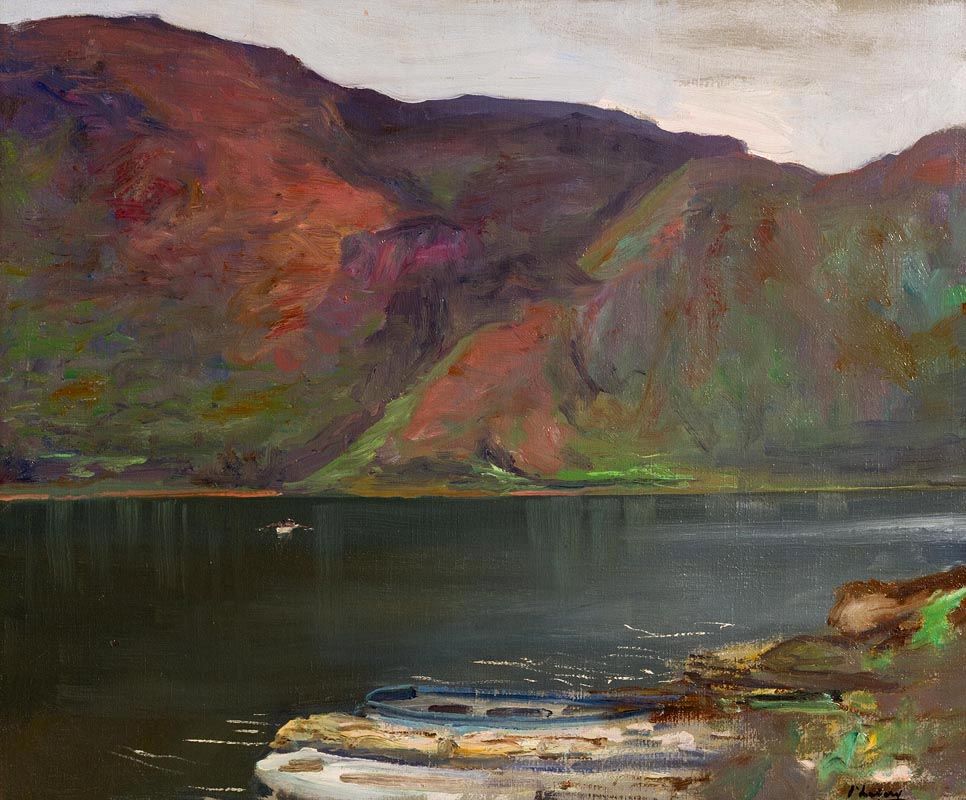
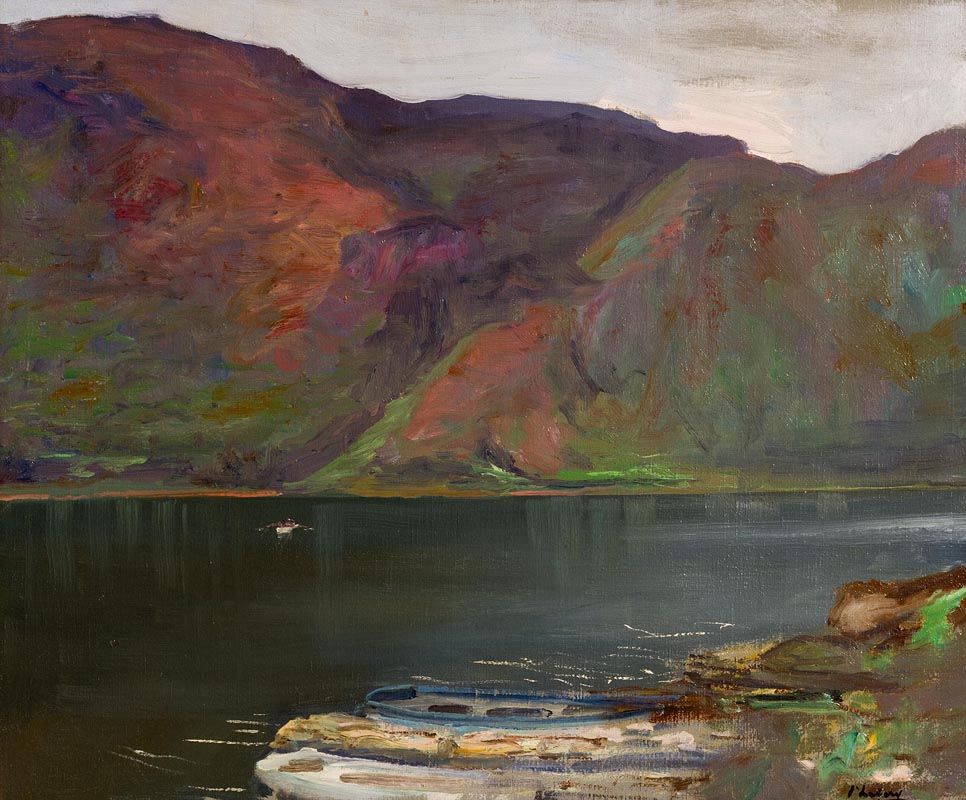



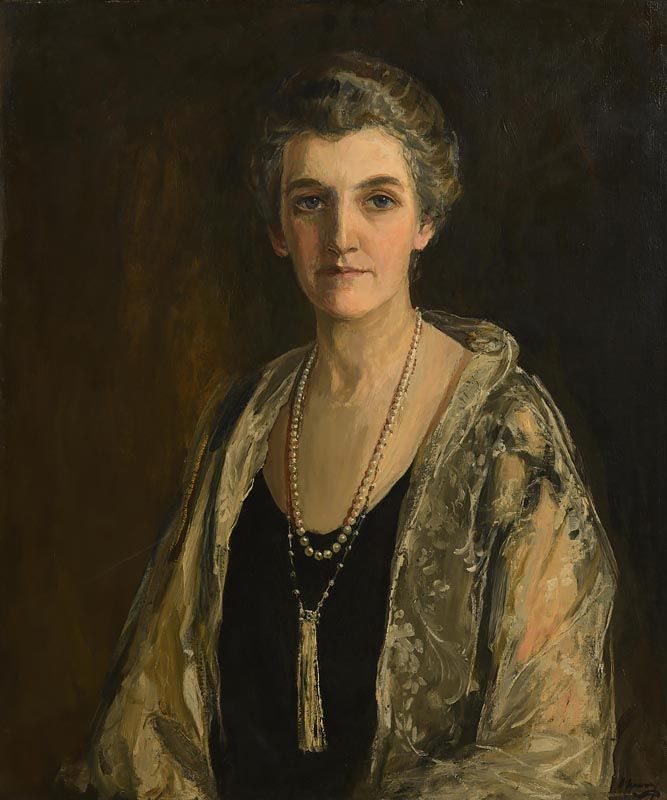
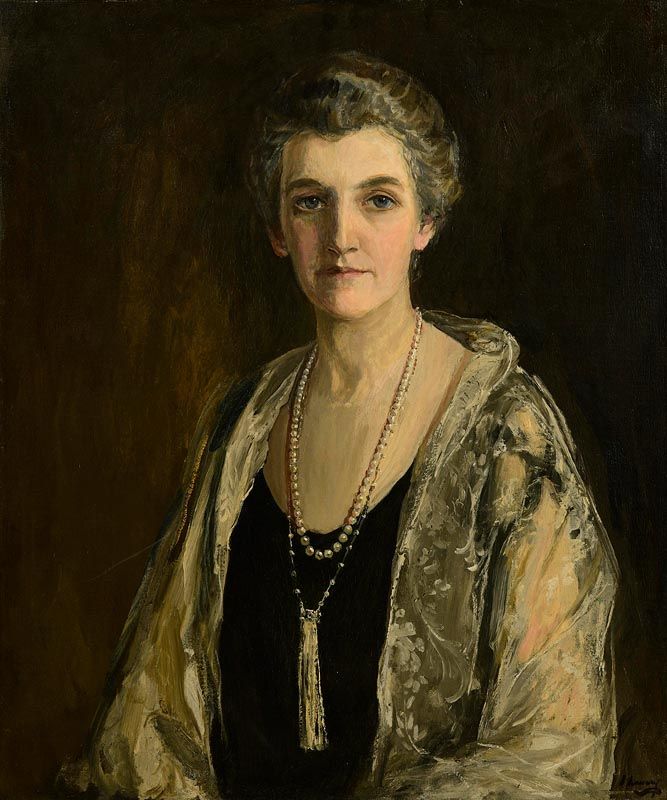
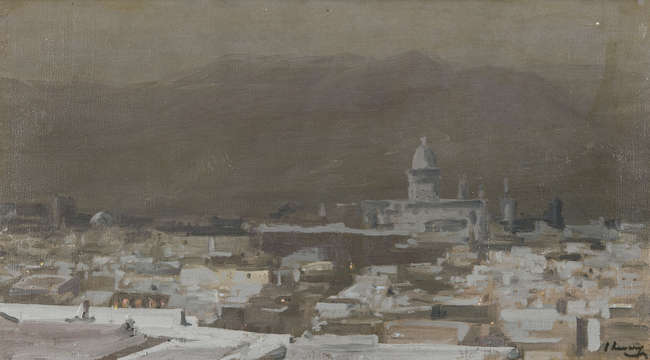


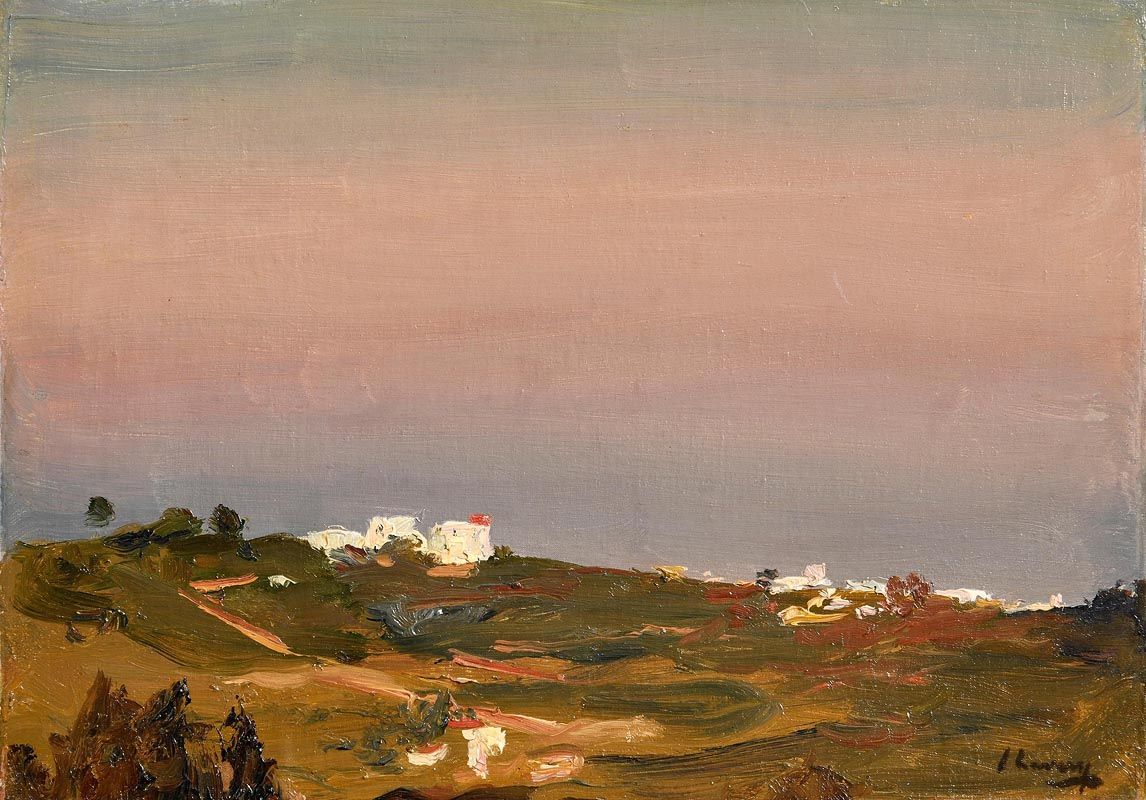


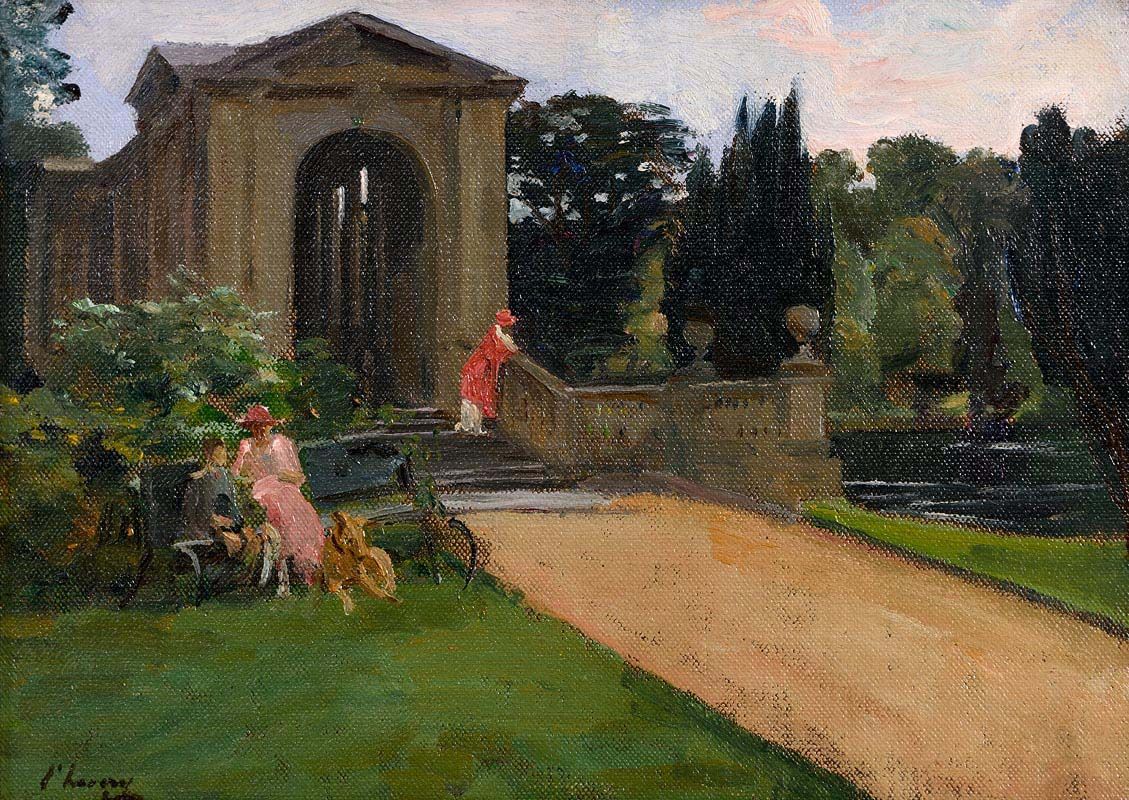

Testen Sie LotSearch und seine Premium-Features 7 Tage - ohne Kosten!
Lassen Sie sich automatisch über neue Objekte in kommenden Auktionen benachrichtigen.
Suchauftrag anlegen